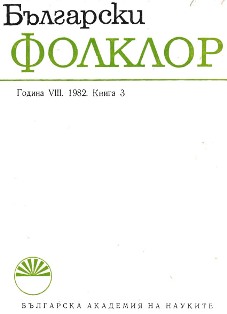За цветовете в българската народна песен. 1. Подбор и употреба
On Colours in the Bulgarian Folksong. 1. Selection and Use
Author(s): Donka Petkanova-TotevaSubject(s): Anthropology
Published by: Институт за етнология и фолклористика с Етнографски музей при БАН
Summary/Abstract: The article deals with the difference in the use of colours in the folksong as compared to literature. The folk singer is endowed with an aesthetic feeling for colours, he gives preference to the colour characteristics of objects and living creatures (animals, people’s faces, clothes). Health, illness, mood are often expressed in terms of colours. Nationalities are often denoted by means of colours and thus peculiar generalizations are made connected mainly with religious feelings. Observations reveal that the folk singer has a liking for vivid and clearly-defined colours. White, black, green, yellow and red prove to be the most actively employed ones. Unlike literature, the folksong never makes use of a whole range of colours. The semantics of the colours presents an interesting problem which has a particular place in the study of medieval ceremonial, literature and art, as well as in folk rituals and folk literature. In most cases colours in the folksong have no symbolic meaning whatsoever, they are the reflection of reality. In some instances however, single colours have become permanent signs reflecting certain views or tastes. By means of the colours the folk singer usually gives an outward depiction of real life and achieves visibility of this depiction. The use of colours in the Bulgarian folksongs depends on their themes as well as on their genre. A peculiar distribution of colours could be noted in ritual songs, this being closely related to the meaning of the rite. The colours in the folksong have, above all, an aesthetic value, they are a mark of beauty, or of ugliness. The personages and the world of objects are seen not so much from a photographer’s point of view but through the eyes of an artist who selects and applies the colours with view to aesthetic feelings and purpose.
Journal: Български фолклор
- Issue Year: VIII/1982
- Issue No: 3
- Page Range: 13-27
- Page Count: 15
- Language: Bulgarian
- Content File-PDF

